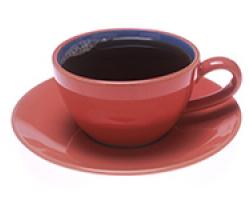OK, this Sunday morning’s switch-over, with its bonus hour of sleep, wasn’t as painful as when we “spring forward” and lose one. Still, the change in time can leave us feeling drab or jetlagged.
Just as we ran around the house this AM re-setting clocks, so must we now re-synchronize our own body clocks. Too bad sunlight isn’t on our side in many locations, as it is in March. One remedy that still works well in Autumn is a good old cup of Joe.
Here in Portland, Oregon where it will remain damp, dark, and drizzly for seven months, we rely on coffee to keep us from dragging. A recent poll of 1,000 residents asked: “How many cups of coffee do you drink during a typical workday?” Thirty-one percent said they get by with one cup, while 28 percent required two to get the full wake-up effect.
Medical experts say adults need about 200 mg of caffeine to do the trick, but that varies depending on how you consume it, your genetic makeup, and how much tolerance you’ve built up. For example, dowining a morning mug of coffee will zap you awake fast, while sipping it slowly in the afternoon will keep you from getting jittery.
You don’t have to drink coffee, of course, to get that caffeine buzz. Here are a mix of beverage options, from most milligrams contained to least:
McDonald’s large coffee (16 oz) = 133 mg
(Watch out for hyper-buzz blends such as Starbucks’ Bold Pick of the Day at 330 mg for a 16 oz)
Red Bull energy drink (8.4 oz) = 77 mg
Espresso (single shot) = 75 mg
(Amazingly, espresso has less caffeine than brewed coffee. A small latte usually has only one shot.)
Diet Coke soft drink (12 oz) = 47 mg
Black tea (8 oz) = 55 mg
Green tea (8 oz) = 35 mg
How about you? Do you depend on caffeinated drinks? Or do you get caffeine from other sources — such as Extra-strength Excedrin, which clocks in at 130 mg for two tabs.
Good luck to all nurses in keeping energy up as we dip down into the darkness.
- Resumes, LinkedIn, and HR Portal Profiles, Oh My! - May 22, 2020
- Weight Management for Nurses: The Why’s and How’s of Losing or Maintaining Weight - February 18, 2020
- Mindfulness and Wellness Programs for Patients - October 14, 2019



